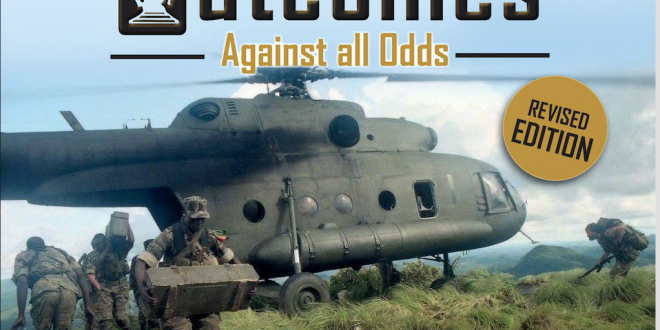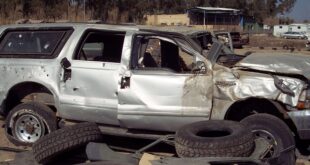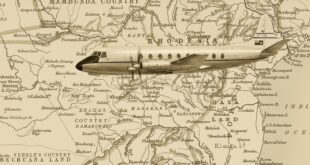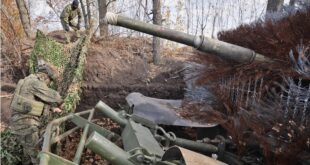
SOF INTERVIEW WITH EEBEN BARLOW
“EXECUTIVE OUTCOMES: AGAINST ALL ODDS”
The book ‘Executive Outcomes: Against all Odds’ is a personal account of a company that gained fame and praise through its successes, and notoriety through its detractors. It is a story that cannot be told without including part of the founder, chairman, and author’s (Eeben Barlow) story.
This is a frank, hard-hitting, fast-paced story of hardship, perseverance, honour, and bloodshed—a story that spans several continents, and always ended in triumph, despite overwhelming odds.
It is a story of war, espionage, subterfuge, betrayal, deceit, and criminality, abuse of intelligence services, anger, frustration, and the heartache of losing men in battle—along with mass hypocrisy and deception practised by some journalists in the media.
The company started its short life training the SADF’s Special Forces in covert operations. It went on to train a specialist counter-crime team for the Botswana diamond giant Debswana. It was also exposed to the conflicts and problems on the Indian sub-continent and South America when governments there called on it for help.
The path Executive Outcomes eventually followed was fraught with danger as it took its men to the blood-soaked sands of Angola, the rebel-infested jungles of Sierra Leone, and to the release of hostages held by rebels in Indonesia’s Irian Jaya territory. Ironically, the success of the lighting raid to release the hostages in the sweltering jungles of South East Asia, was quickly claimed by others who had previously failed.
The United Nations, quick to condemn the company when its own path was littered with failure after failure, rushed in once the men of EO had secured an end to hostilities, called on international governments to force the company’s removal, and stood by idly and watched as violence and conflict once again flared up and spiralled out of control. Yet the omnipresent UN were quick to write about and claim their roles in EO’s success—usually a great loss of life and astronomical cost.

The background to other conflicts such as the Rwandan genocide, and a request to assassinate an African politician are also covered. So too is its foray into Saudi Arabia and elsewhere discussed.
The book contains numerous maps, diagrammes, and black and white and coloured photographs, some never seen before.
It also contains copies of numerous deceptive and false media reports, as well as copies of numerous false intelligence reports generated by an ever-desperate Military Intelligence, who, for reasons of their own, were intent on keeping conflicts alive in Africa.
With one false report giving credence to another, the company faced a constant disinformation onslaught seldom seen or experienced by a private company, accepting legitimate contracts, and working for legitimate governments. The fabricated reports gave rise to the company being branded as ‘criminal’ and ‘a destabilising force’ across the continent, when the reality was that it actually prevented government and privately-sponsored crime, and brought about a speedy end to several conflicts and problems, thereby saving the lives of many thousands of Africans. These intelligence and media lies finally led to an early morning raid on the author’s home by a large law enforcement team.
Despite having a South African government permit to operate, journalists claimed that it ‘was not in the public’s interest’ to be made aware of this fact.
The approaches governments and their supporters implemented to stop the company did not end with deceptive and false intelligence and media reporting. It extended to providing rebel forces with intelligence and weapons and other equipment, encouraging attacks on the company, encouraging rebels to shoot down EO aircraft ferrying men to the countries the company was engaged in, as well as attempts to kill the founder and chairman.
An in-depth investigation in later years found that the stories, intelligence and reports on EO were all fabricated and false. Despite being aware of these findings, the media simply ignored them, again claiming it was ‘not in the public’s interest’.
The author is critical of some of the mistakes he made, and indeed calls into question some leadership and command decisions he formulated, but he gives full credit to the men of EO who were the ones that made the company what is was.
During the revision of the book, several intelligence officers came forward to ask for forgiveness in their role against the company and expose their false reporting—ostensibly on orders ‘from above’.
This lengthy book (768 pages) answers many questions the reader may have, such as why it was really targeted and vilified, as well as why South Africans working in other conflict areas do not face the same treatment as EO. But, it also begs for answers such as the very lengthy SADF involvement in Angola and the lack of political will to see it through to its conclusion—and who really benefited from the conflicts across Africa.
Eeben Barlow is the author of the best-seller ‘Composite Warfare: The Conduct of Successful Ground Force Operations in Africa’.
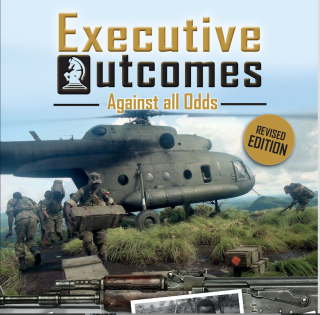
QUESTIONS AND ANSWERS
Question 1: Which South African Defence Force (SADF) units did you serve in?
Answer 1: I was badged and commissioned as a sapper (Corps of Engineers). I was then attached to 101 Task Force (16 Field Squadron) for a three-month period, and thereafter, I was redeployed to 2 Field Engineer Regiment. Later, I was attached under operational command of 54 Infantry Battalion and 53 Infantry Battalion – both were counter insurgency infantry battalions—deployed in the South West African (later Namibia) operational theatre. Thereafter, I was sent to 32 Battalion (a clandestine infantry battalion) and ultimately became the second-in-command of the battalion’s Reconnaissance Wing. I then spent several years with a covert Military Intelligence unit recruiting and running agents. After that, I was incorporated into the Civil Cooperation Bureau (CCB), a covert Special Forces element. I was never a badged Special Forces operator and was recruited, I think, on the basis of my operational experience. CCB’s mission was to identify, locate and neutralise enemies of the state that normal Special Forces units could, for whatever reasons, not undertake. I was the commander of Region 5 (Western Europe and Middle East), until I became politically expedient, ie fired.
Question 2: Why and when was Executive Outcomes formed – and by who?
Answer 2: I was the founder of Executive Outcomes (EO). In later years, many people would claim they were founders of the company – they all lied. Given my experience and operations in clandestine and covert environments, I was approached by the SADF’s Special Forces (Recces) to provide covert training to selected Special Forces members. To do so legitimately, I needed a company. I established EO as a registered company (under South African company law) in 1989 to provide military-related training, advice and mentoring. The company was at, that time, essentially a one-man band. I was later contracted by governments and private corporations to assist them with military advice and counter-crime operations.
Question 3: When did the world really become aware of EO?
Answer 3: EO’s first large contract was initially intended to provide protection for recovery teams for an oil company. This was in 1993. The oil company had a lot of its off-shore equipment stored on a harbour known as ‘Soyo’. Despite the SADF’s undeclared war with Angola having ended several years prior to this contract, South Africa was still secretly supporting UNITA—the Angolan rebel force that wanted to seize control over Angola. Unbeknownst to me, Soyo was being used as the supply point for weapons and equipment to UNITA, payment being made primarily in diamonds—and it was under UNITA control. What should have been a straightforward security task, morphed into an offensive and defensive battle to secure the harbour to enable the recovery of the oil equipment. Several members of SA’s Military Intelligence (MI), including business entities and businessmen, had very personal economic interests related to Soyo and UNITA. The SA media was therefore used to not only warn UNITA of the fact that EO had been given a contract in Soyo, but also to imply that EO was also going to assassinate UNITA’s leader, Dr Jonas Savimbi. This resulted in a massive media and disinformation campaign aimed at stopping EO, using all and any means possible—including the international media. A telephone call was even made from the SA parliament buildings in Cape Town to UNITA’s office in London instructing them to get rid of EO at all costs. Obviously, the men that I had recruited for the task, were not prepared to fail in their contract. EO lost three men in killed in the Soyo area. This very successful contract resulted in the Angolan Armed Forces (FAA) approaching EO to train their army to bring about an end to the decades old civil war in Angola. With this contract, came a massive renewed intelligence and media onslaught against the company, not only from the SA media and intelligence services but numerous foreign governments and the United Nations (UN).
Question 4: Where did you get the men you needed for the company?
Answer 4: I recruited from units such as 32 Battalion, Special Forces, the Parachute Units, normal infantry units, Koevoet, 101 Battalion, 61 Mechanised Battalion Group, the South African Police’s Special Task Force, and so on. There were also a few men from the African National Congress (ANC) Military Wing (MK) that joined the company. Where they came from wasn’t really a recruitment criteria, it was what they could do that mattered to me.
Question 5: The media continued to imply that EO consisted of ‘racist, apartheid-era, soldiers’. What is your response to that?
Answer 5: The media, and those who needed to stop us to secure their personal economic interests, continually propagated this lie to create racial tension within the company and distrust of the company by African governments as they feared EO successes might lead to more contracts in Africa. The media and those behind the drive to discredit EO conveniently forgot to add that EO consisted of both white and black Africans. Our black members eventually outnumbered our white members by about 80 percent. So, even though the white men were in the minority, we were still regarded as ‘racist’. Insofar as us being ‘apartheid-era’ soldiers: we never chose the wars or conflicts South Africa chose to get involved in. As soldiers, we obeyed orders and went where we were sent. Ironically, just a few years prior to this, the media was still boasting of the power of the mainly white staffed SADF. Equally ironic, other armies that remain in place during and after a government’s time in office are not labelled eg. the Democrat-era soldiers, or the Conservative-era soldiers. That moniker is only reserved for South African soldiers. Furthermore, EO had many men in its ranks that had fought against ‘apartheid’. Over time, EO had men from not only South Africa, but also from Namibia, Angola, Sao Tome, Zaire (now DRC), Zimbabwe, and even Mozambique. This too was conveniently never mentioned.
Question 6: Why do you think EO was so successful?
Answer 6: There are several reasons for EO’s successes:
Firstly, during my time in the SADF, I came to realise that the Clauswitzean view of a single Centre of Gravity, as taught by the SADF, was not correct as the enemy did not have a single centre of gravity. I know many of my men believed the same. A single Centre of Gravity may have been applicable to the days of old when two field armies opposed one another on the field of battle. This was, and is, no longer the case. I believed that the enemy had three centres or ‘points of gravity’—I referred to this as a Trinity of Gravity; his funding, his military forces, and the local population. If two of these ‘points’ could be neutralised, the enemy would collapse. (I wrote about this in my book ‘Composite Warfare: The Conduct of Successful Ground Force operations in Africa’). I discussed this view with the Angolan General Staff and they agreed. After EO had trained what became known as the 16 Brigade, the primary targets were retaking the diamond fields from UNITA (their funding), isolating and destroying their forces on the battlefield (their military forces), and impacting positively on the local population in areas the brigade advanced through. The armchair strategists in MI, the media and those feeding them stories on EO, immediately claimed we were attacking the diamond fields for ourselves, having no clue what the strategic intent was or why it was. With no income from illegally mined diamonds and having suffered massive casualties and loss of materiel at the hands of 16 Brigade, UNITA sued for peace. This approach was also later adopted in Sierra Leone. As soon as the rebels there (Revolutionary United Front—RUF) lost the diamond fields in the east of the country, they sued for peace. Ironically, in Sierra Leone, some foreign military advisors, secretly advising the president there, claimed that retaking the diamond fields from the RUF would require a six-month long operation. A small EO force under command of Roelf van Heerden did it in two days.
Secondly: We were never forced onto a government—EO was invited into African (and other) countries by the legitimate governments of the day—regardless of their international standing. As such, we were viewed as allies and not as a threat to their governments. They provided us with the (very minimal) equipment we had and we had to develop campaign strategies with minimum means to achieve the desired ends. This required thinking out of the box as ‘ways’ had to be designed to enable meagre means to be applied to best effect. This brought its own challenges as most African armies were (and some still are) clones of their once European masters and this is reflected in their doctrines which were either designed to fight the Germans in WWII or the Soviets in Europe. These doctrines fail in Africa for numerous reasons. They remain outdated and irrelevant. So, the men of EO had to work at adapting these doctrines to retain flexibility and battlefield agility with lesser means.
Thirdly: The men of EO were integrated into the government forces and were seen as ‘fellow soldiers’ and not as ‘foreigners’. As Africans, we were (and still are) viewed as ‘children of Africa’ and we understood their cultures, traditions, fears and so forth, and we respected that. We also wore their ranks and acted according to their laws. We deployed with them, we mentored them during operations as well as assessed our training, doctrine, command and control, and so forth. We did not train them and then send them off to apply their training in combat on their own—we were there fighting alongside them, advising them, suffering the same hardships they did. They also saw how we treated the locals and this gave them renewed respect for the men. We did not merely apply sound bytes and hope for the best.
Of course, some rotten apples slipped through the EO recruitment process but when we identified them, we immediately terminated their contracts.
Question 7: A lot of allegations were made in the media that EO was operating illegally. How do you respond to this allegation?
Answer 7: As usual, the media were lying. When a South African government decision was taken to regulate companies such as EO, we welcomed that decision as there were, by then, several companies claiming they were ‘EO’. We saw that decision as an opportunity to either expose them or stop their deception. EO was invited by the government to give input in formulating the law to regulate such companies—and we did. Resultant to this, the government then formulated a law that South African companies working for African governments needed to be licenced. EO applied for such a licence and was duly awarded a licence to operate. When the government licence to operate, along with numerous intelligence reports, was shown to the media, I was told that it was ‘not in the public interest’ to make this known. This merely proved the deception the media was practising as a licenced EO did not match their very deceptive narrative.
If anyone was acting illegally, it was the media as they published reams of false allegations and claims but showed no interest in facts. I believe the SA media was a pioneer in ‘Fake News’. This included news articles, published in the media, such as:
- EO’s men had resorted to cannibalism
- EO was invading Angola on behalf of communists and diamonds
- EO was supporting both the Angolan government and the rebels, simultaneously
- EO was smuggling diamonds
- EO had burgled SA government offices, and so forth.
Question 8: What intelligence reports did you show the media and where did you get them?
Answer 8: I was very aware of MI’s role in formulating disinformation and lies against the company and myself, and then hiding it under ‘Secret’ or ‘Top Secret’ classifications. These classified lies were then either fed to their agents in the media or passed to the National Intelligence Coordinating Committee (NICOC) to take action against EO and myself. To counter these lies where I could, I needed to get access to these reports, so I recruited and ran agents within MI. This allowed me to be forewarned on their planning and what lies they were spreading on the company. Unfortunately, I was unable to really make an impact to expose their lies. However, I ultimately had hundreds of these false reports and they included lies such as:
- EO was created and funded by MI-6 (British Secret Intelligence Service)
- EO was a CIA front
- I was a Russian agent
- The Irish Republican Army (IRA) was involved in creating EO
- EO was planning to assassinate Savimbi (UNITA’s leader)
- EO was planning to assassinate newly-elected President Mandela along with other prominent South Africans
- EO had signed secret deals with North Korea and Iran
- I had personally planned and overseen the Beirut bombing against the US embassy
- I had planned and overseen the downing of Pan-Am 103 over Lockerbie, Scotland
- EO was engaged in vehicle theft and paedophile syndicates
- EO was being paid in oil and diamond concessions
- EO was murdering civilians, and so forth.
Having to deal with this nonsense on a daily basis was exhausting, but it also meant EO had to fight a war on multiple fronts. Ultimately, EO lost the disinformation war.
Question 9: Why did EO partake in the hostage rescue operation in Indonesia’s Irian Jaya region?
Answer 9: General Subianto, the commander of Indonesia’s Special Forces (Kopassus) approached me indirectly and arranged for us to meet in secret in Singapore. At that meeting, he discussed the hostage situation along with the Free Papua Movement (FPM) and the reason they had taken several people hostage. He also told me that the US and the UK had sent specialist troops to secure the release of the hostages but that those attempts had failed. EO was his last resort. A team of EO hostage rescue specialists were despatched to Indonesia and they were absorbed into Kopassus and commenced training them for a different approach to hostage rescue. Several weeks later, they launched the operation, rescued all but one of the hostages (a local was killed by a FPM member with a machete), virtually annihilated the FPM, and the operation attracted a lot of positive international media exposure. Ironically, one Western Special Forces even intimated its role in the successful operation. As we had been sworn to secrecy, we could only read this claim with astonishment as we knew they were lying. When some time later it leaked out that an EO team had indeed been part of the operation, the media again went into overdrive with its anti-EO rhetoric.
Question 10: There were claims that EO morphed into ‘Sandline’. How true was that?
Answer 10: This was a false claim by the founders of Sandline for reasons only they could explain and it was greedily slurred up by the media. However, as Sandline had subcontracted EO for their disastrous contract in Papua New Guinea as well as the fact that several EO men joined Sandline after their contracts were ended when EO closed down, this was all viewed as ‘fact’. This lie was however perpetuated by both Sandline officials as well as the media. Sandline was never EO and EO was certainly never Sandline. Some academics even made this claim in their academic papers as did some PhD students in their dissertations. It is therefore no wonder that, given the falseness of many of these learned people’s writings who advise governments, that the world is in the mess it is in.
Question 11: Assuming that you were able to collect a lot of vital intelligence through your agent network, were you ever able to warn a foreign government of any threats or attacks against their interests?
Answer 11: EO had a vast intelligence network throughout Africa and parts of the Middle East. An agent reported to me that there was a plan to attack a US naval warship in the Middle East. He went on to tell me that the type of attack would not be detected as it would be done by suicide bombers, and it was aimed at the USS Cole which was due to dock in Yemen. I was finally able to convince the agent to discuss this with a member of the US Embassy in Pretoria. The meeting was held in the offices of the Saudi Embassy in Pretoria—and although I controlled the agent, I was told by the Saudi ambassador that the US official said the meeting was too sensitive for me to attend. The agent later told me that the US official had accused him of lying. The agent wasn’t lying and the USS Cole was indeed attacked as the agent said it would be. Disbelieving intelligence in favour of a false intelligence narrative can result in a loss of life as the bombing of the USS Cole proved.
Question 12: In what other African countries did EO work in?
Answer 12: EO only made known where it was working when the media indeed got it right. Other than that, the company had to protect itself, its clients, and keep its deployments secret. I write about our contracts in Angola, Sierra Leone, Indonesia, Uganda and gloss over Rwanda, Zaire, and so on. No need to awaken sleeping dogs…
Question 13: Why and when did you leave EO and what did you do thereafter?
Answer 13: By 1997, I was exhausted as I had to contend with the increasingly deceptive media, several attempts to kill me, and having to pacify concerned governments that were being threatened by foreign governments if they continued to use EO. I resigned and gave the company to the men who had loyally served it. Sadly, they had their own problems and decided to close the company in 1998. For several years, I rode and worked horses and also acted as an advisor to several African governments—something that had to be done in secrecy. In 2009, I was approached by a group of men who had served in EO and asked to chair their fledgling company STTEP International Ltd. Since then, STTEP has very successfully worked across Africa assisting under-siege governments. But, as with EO, STTEP has not been without its problems as it appears we are upsetting foreign interests in Africa.
Question 14: What happened in Nigeria?
Answer 14: STTEP was initially contracted to rescue the girls that had been taken hostage by Boko Haram (BH), a particularly vicious Islamist group in Nigeria. These girls were referred to as the ‘Chibok girls’. The president at that time and his National Security Advisor (NSA) did not view hashtag campaigns as the way to rescue the girls. We were given a three-month contract to train the Nigerian forces and conduct the rescue. Whilst the training was on-going at the Nigerian Army School of Infantry, BH escalated its offensive and had isolated and was poised to overrun the Nigerian Army’s 7 Division at Maiduguri, north-eastern Nigeria. STTEP was asked to change the initial rescue mission and go to the aid of 7 Div to help remove the BH threat. With minimum equipment, we trained and integrated with a force that became known as 72 Mobile Strike Force (MSF) and rushed to the aid of 7 Div. Agreement was reached with the OC, 7 Div that the 72 MSF would spearhead the division breakout from the BH stranglehold, commence immediate offensive operations to identify, locate and annihilate BH forces, and the division troops would become follow-on forces and occupy terrain retaken from BH by 72 MSF. In less than a month’s operations, the 72 MSF retook terrain larger than Belgium from BH. This however led to problems for STTEP. We were advised that the US (either the government, the Dept of State or Africom) had threatened the Nigerian government with consequences if STTEP’s contract was not immediately terminated. This did not only happen in Nigeria – it happened to STTEP in Uganda (training and fighting alongside UPDF troops against the LRA. Here, Pres Obama sent 100 US SF troops to counter STTEP’s role with the UPDF), and in Garamba National Park (DRC game park being used by rebel groups, and poachers alike) and here too Africom members threatened the park if they made use of STTEP. Needless to say, STTEP’s departure from Nigeria and elsewhere has only allowed the anti-government forces there to intensify their actions. Believing in and working according to the mantra ‘African solutions to African problems’ is apparently not permissible in Africa as it is viewed as a threat to foreign destabilisation and interests. Given the foreign attempts to stop us and threaten those governments who dare to contract us, we have come to believe that Africans are not allowed to solve African problems—that right is solely reserved for those who are creating chaos across Africa.
Note:
Both books were published by 30 Degrees South, Pinetown, Natal, South Africa.

They can be ordered directly from www.warbooks.co.za, a mail order book seller that specialises in the South African ‘border war’ as well as other conflicts in Southern Africa such as Rhodesia, and Mozambique.
 Soldier of Fortune Magazine The Journal of Professional Adventurers
Soldier of Fortune Magazine The Journal of Professional Adventurers


